Monk Class Overview
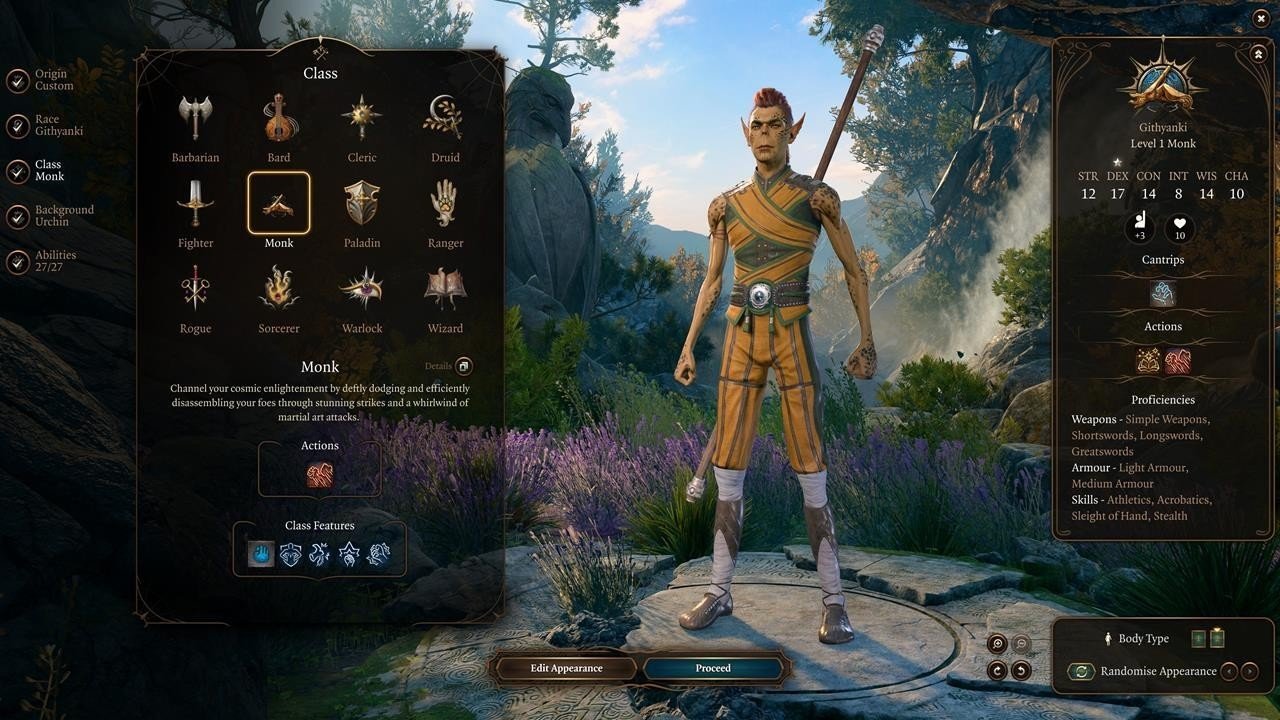 Image credit: oxtero.com
Image credit: oxtero.com
The Monk is one of the three classes in Baldur’s Gate 3 that predominantly engages in close combat. Taking hand-to-hand combat quite literally, the Monk receives bonuses and special attacks specifically for unarmed combat. They possess martial arts abilities that can alter the flow of battle, offering new avenues of attack, as well as unique defensive skills like the ability to deflect ranged and magical attacks.
The Monk is a unique class in D&D and BG3. Although it is a combat class with a melee focus, it isn't concerned with costly weapons and armor.
One standout feature of the Monk is Ki — a special resource that regenerates after every short rest and powers many of the character's abilities. Players begin with only two Ki points and gain an additional one with each level up. Monks also have a passive armor-less protection, similar to Barbarians, which boosts their armor class based on their wisdom modifier when not wearing armor.
After reading this Monk class guide, you'll gain insights into the character, its features, subclasses, skills, and more. We hope that the Baldur's Gate 3 Monk will unveil a novel and intriguing aspect for you.
Monk Class Playstyle
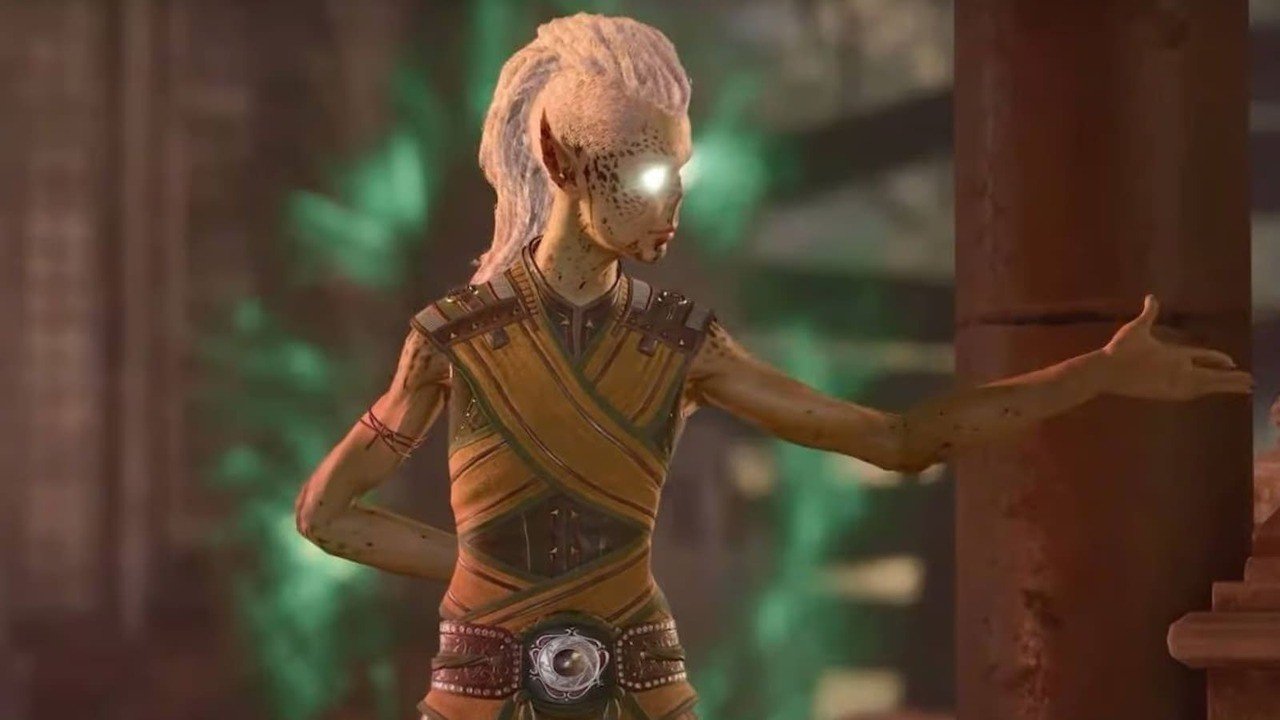 Image credit: crast.net
Image credit: crast.net
In Baldur's Gate 3, the Monk requires energy that they use magically to channel through their body to show their combat, defense, and speed ability. This energy can substitute for the weapons and armor typical of other characters skilled in martial arts.
The Monk class can move and fight with unarmed weapons charged with the Ki energy, apply debuffs, and deflect missile strikes. Within a group, this class should function as nimble attackers and skirmishers, dealing damage to foes and evading traps.
When played adeptly, the Monk class can evolve into a resilient "tank". Proper distribution of the Monk's skills is crucial to maximize their potential.
Monk Class Progression
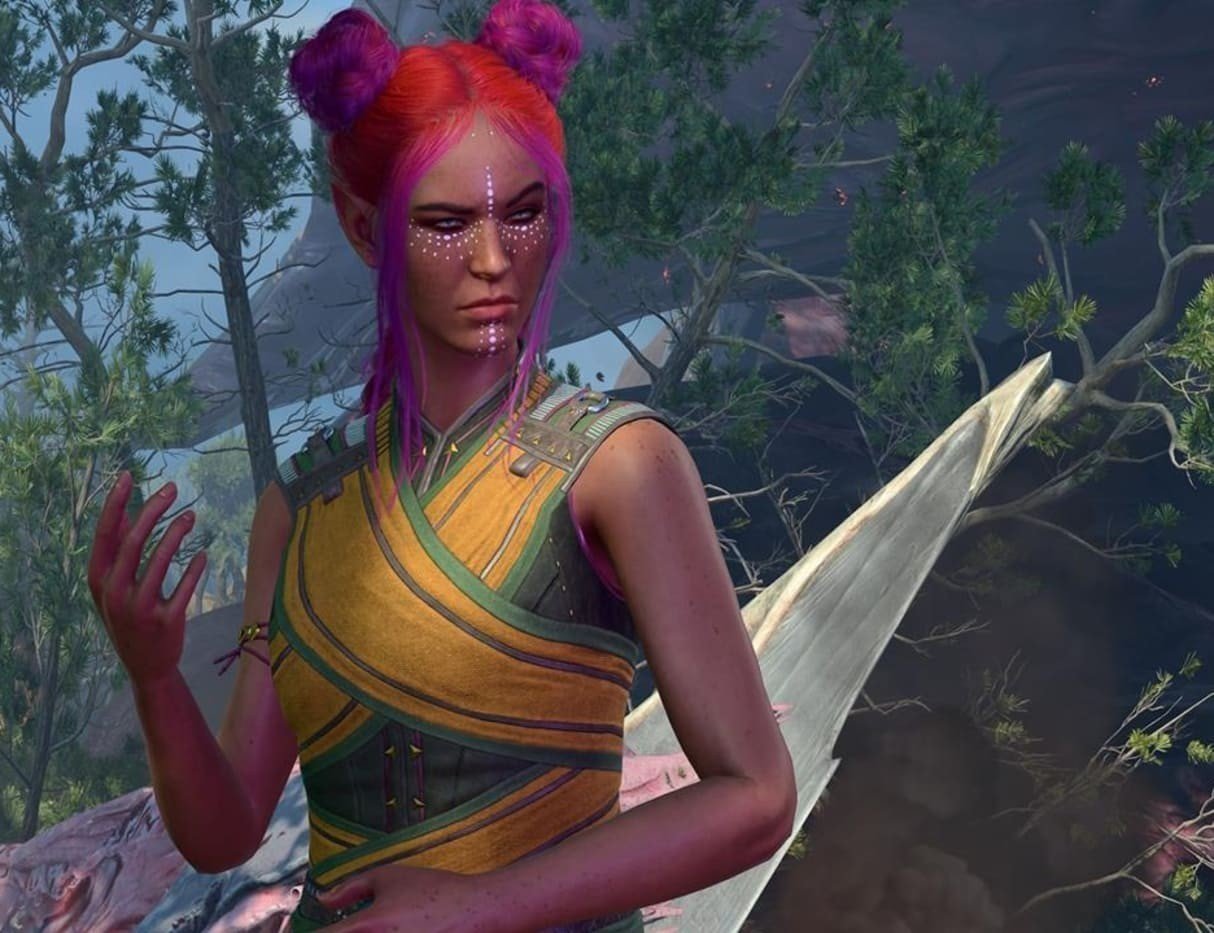 Image credit: x.com
Image credit: x.com
In this section of our guide, you've reached the Monk class progression within the Monk class guide. Here, we will explore all the potential capabilities of this character based on their level. This guide aims to help you better understand the Monk in Baldur's Gate 3 and strategize for future gameplay.
Level 1
At level 1, the Monk gets the following features:
• Flurry of Blows.
• Ki.
• Unarmored Defense.
• Martial Arts.
Level 2
Moving on to level 2, here's what the Monk gains at this game stage:
• Patient Defense: Advantage on your Dex saves when you're attacked.
• Step of the Wind: The Monk moves quicker and dodges attacks better.
Level 3
• Subclass Choice: Pick Way of the Open Hand, Way of the Shadow, or Way of the Four Elements.
• Open Hand: there are additional actions of this proficiency.
• Shadow: Learn Shadow Arts techniques.
• Shadow: Gain the Minor Illusion spell.
• Four Elements: Pick three spells from the available list for Disciple of the Elements.
• Four Elements: Harmony of Fire and Water lets you recharge Ki.
Level 4
At level 4, as a Monk, you'll select from a list of feats. Additionally, you'll choose an ability upgrade, which can either enhance a bonus or negate a penalty. Recommended feats include:
• Athlete;
• Lucky;
• Mobile;
• Polearm Master;
• Skilled;
• Tavern Brawler;
• Tough;
• Weapon Master.
Level 5
Moving on in the guide, at level 5, the Monk gains:
• Stunning Strike: The proficiency to stun enemies.
• Shadow: Cloak of Shadows lets you become invisible.
Level 6
Reaching the midpoint, features include in the Monk class guide:
• Ki-Empowered Strikes: Unarmed attacks count as magical against resistances and immunities.
• Open Hand: Gain proficiency in Manifestation of Body, Mind, and Soul.
• Open Hand: Restore HP and Ki with Wholeness of Body.
• Shadow: Monk gains proficiency to teleport from shadow to shadow.
• Four Elements: Choose another Disciple of the Elements spell.
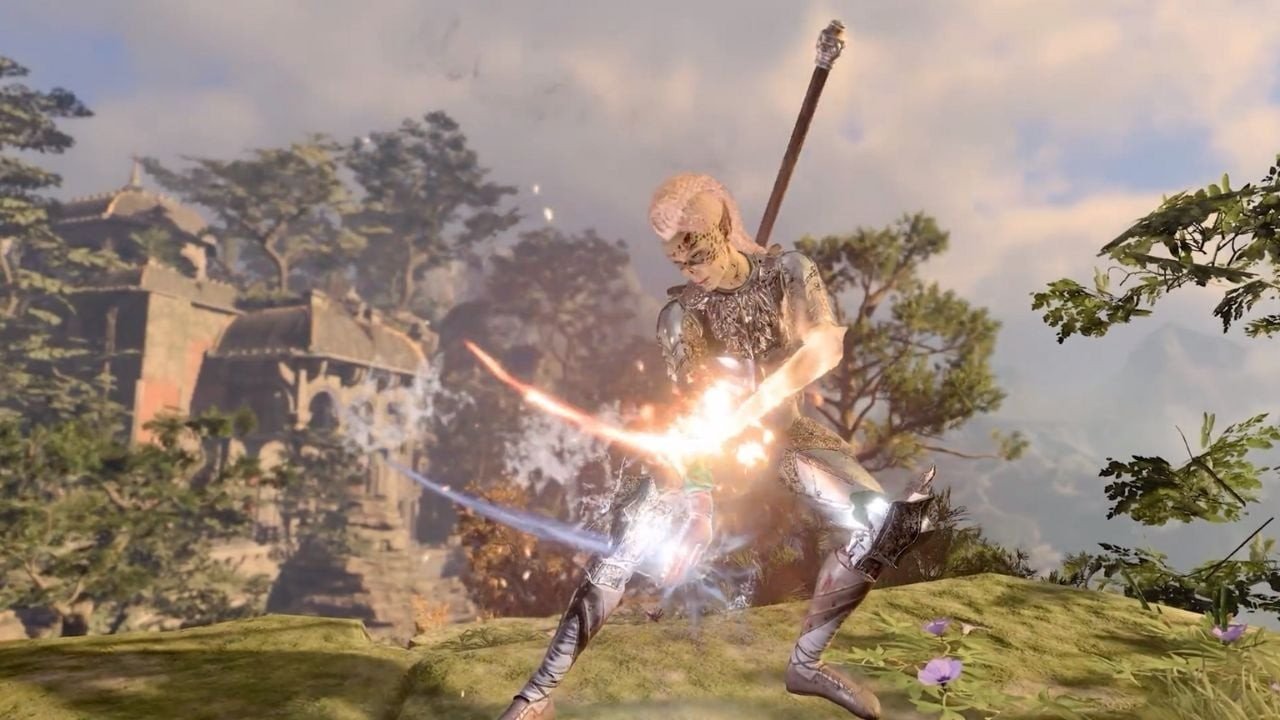 Image credit: sunbeam-tech.com
Image credit: sunbeam-tech.com
Level 7
• Stillness of Mind: Clears your mind from charms or fears.
Level 8
Level 9
For level 9, features are:
• Open Palm: Ki Resonation lets you explode enemies affected by Ki.
• Four Elements: Upgraded spells with Improved Elemental Casting.
Level 10
Level 11
Almost at the end in the Monk class guide, at level 11:
• Open Hand: Tranquility offers the Sanctuary spell's effect.
Level 12
BG3 Monk Subclasses
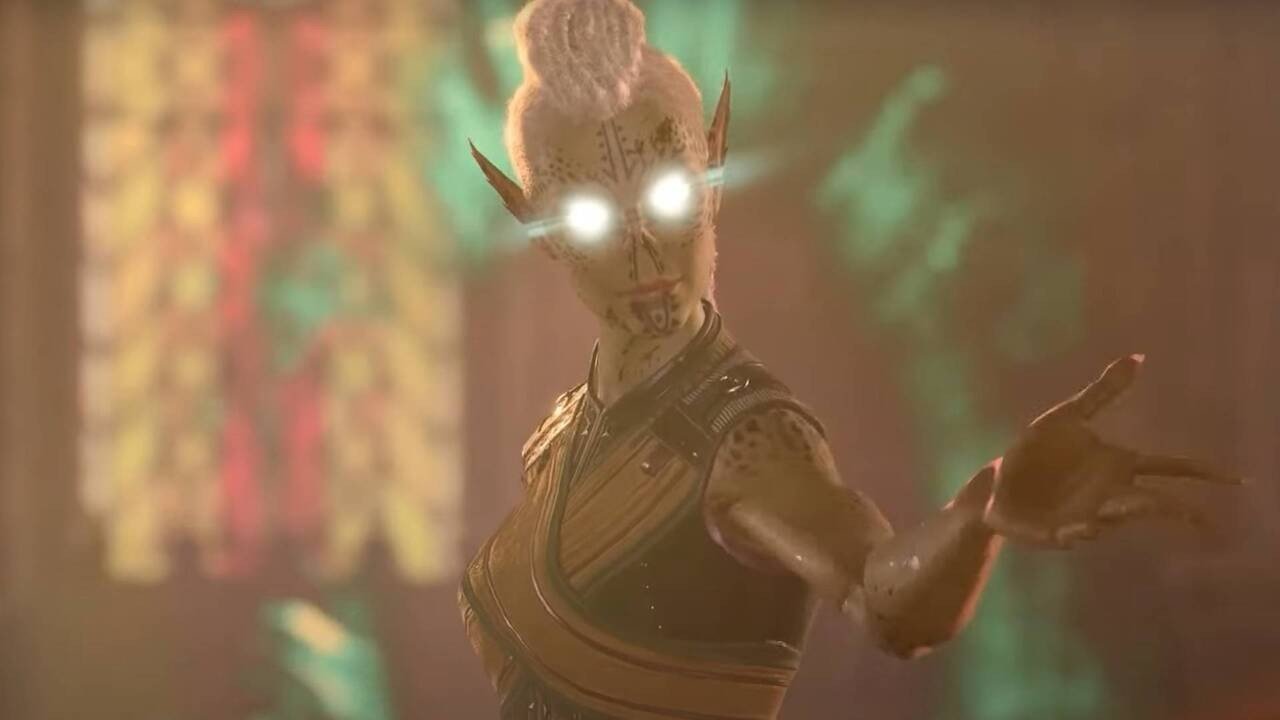 Image credit: alcasthq.com
Image credit: alcasthq.com
Following this, our Monk class guide will delve into the Monk subclasses. At the third level in Baldur's Gate 3, a Monk selects a Monastic Tradition, which influences the character's development. Each subclass grants a novel ability, amplifying one of the class's proficiencies. We'll examine each available subclass for the Monk.
Way of the Open Hand
 Image credit: alcasthq.com
Image credit: alcasthq.com
Open Hand Monks represent the classic idea of a Monk skilled in eastern martial arts. This subclass relies heavily on close combat and remains powerful even unarmed. When a weapon is discarded, the Monk infuses their hands with elemental damage, boosting their damage output. Open Hand Monks are often considered beginner-friendly in the early and mid-game due to their straightforward yet effective combat style. This subclass has the following features:
• Manifestation: The Monk absorbs Ki energy, allowing you to choose radiant, necrotic, and psychic damages. Most enemies can't resist this attack. Some creatures, like undead, take extra damage.
• Wholeness of Body: A great skill of Monk for this subclass. The Open Hand Monk can replenish their Ki, heal themselves, or get a bonus action in the same turn.
• Ki Resonation: A potent Monk offensive ability. The character deals additional damage to the target and imposes a Ki resonance on them. After applying these skills of Monk to one or multiple targets, the Monk can activate the "Ki Resonation Blast", causing all targets to explode, damaging themselves and nearby enemies.
Way of the Shadow
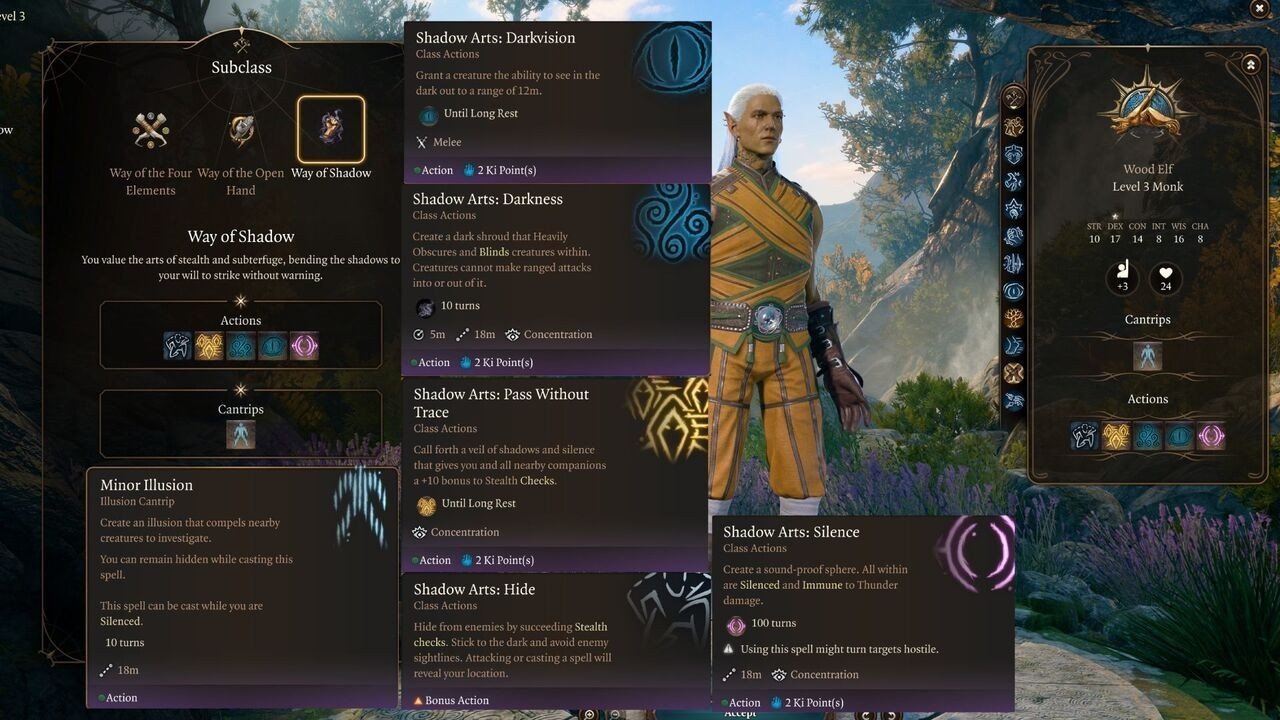 Image credit: alcasthq.com
Image credit: alcasthq.com
This Monk subclass is for those who fancy playing a ninja role. Way of the Shadow Monks gain abilities focused on stealth and massive psychic damage. Your character can remain nearly invisible to most targets until making an attack. This subclass features:
• Shadow Arts: The Monk can use Ki to cast stealth-related spells. They can enhance the stealth of the entire party, vanish in front of an enemy, see in the dark, silence themselves and party members. They can also cast a darkness spell, blinding enemies and preventing ranged attacks.
• Cloak of Shadows: The Monk becomes invisible until they attack.
• Shadow Step: Use shadows for teleportation. Moving from one shadow to another gives you a bonus on your next attack.
• Shadow Strike: Allows you to teleport to an opponent and deal additional damage.
Way of the Four Elements
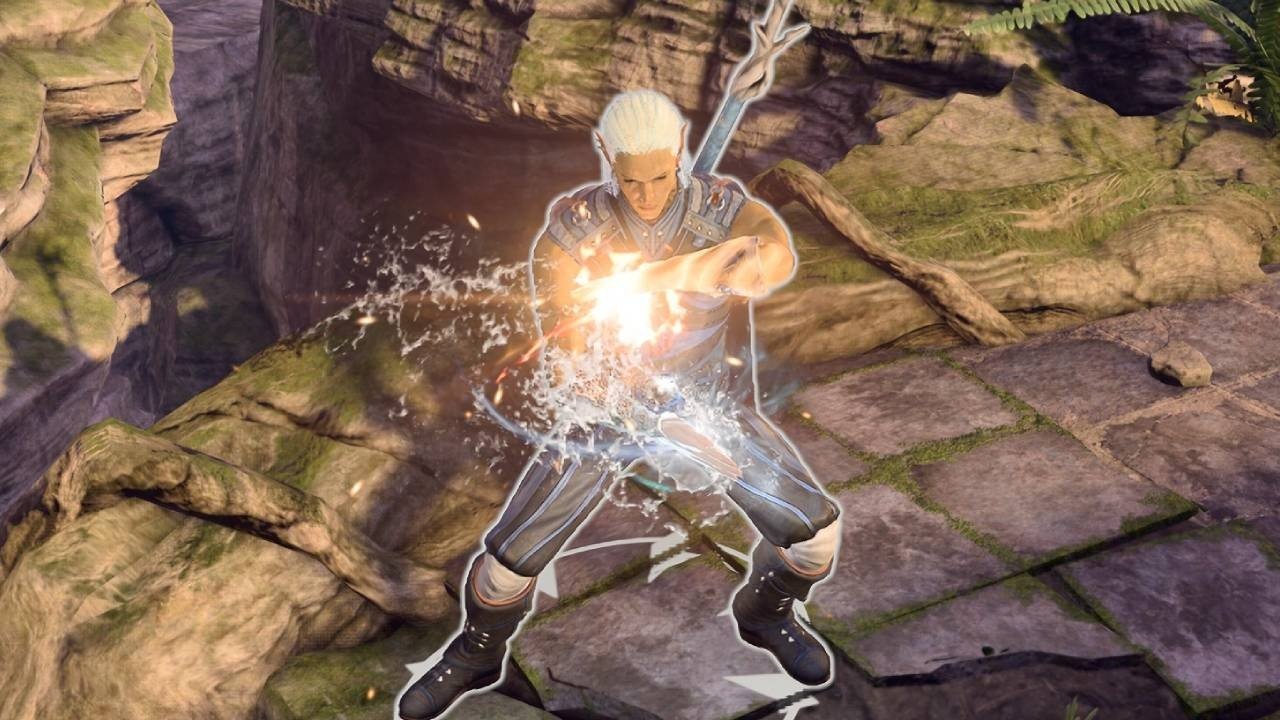 Image credit: alcasthq.com
Image credit: alcasthq.com
The third Monk subclass in the Monk class guide can be likened to "Avatar" as it harnesses the power of nature. Their primary weapon is the elements. Using Ki, a monk can cast spells comparable to wizards and clerics. They have many such skills.
Disciple of the Elements is a unique technique for Monks. You can choose spells that deal elemental damage. The chosen element can deal damage via fire, cold, thunder, or lightning. The spell's power increases as you level up.
Notable Spells in the Monk class guide:
• Fist of Four Thunders — A thunder element creates a wave that pushes enemies away.
• Blade of Rime - Sends an icy blade at enemies. The blade explodes, dealing area cold damage and turning the surface to ice.
• Shaping of the Ice — The cold element allows the creation of an ice cube for cover or as an object.
• Water Whip — Damages a target and either pulls it towards the character or knocks it down.
Harmony of Fire and Water: The Monk recovers some Ki energy.
Monk Class Build Recommendation
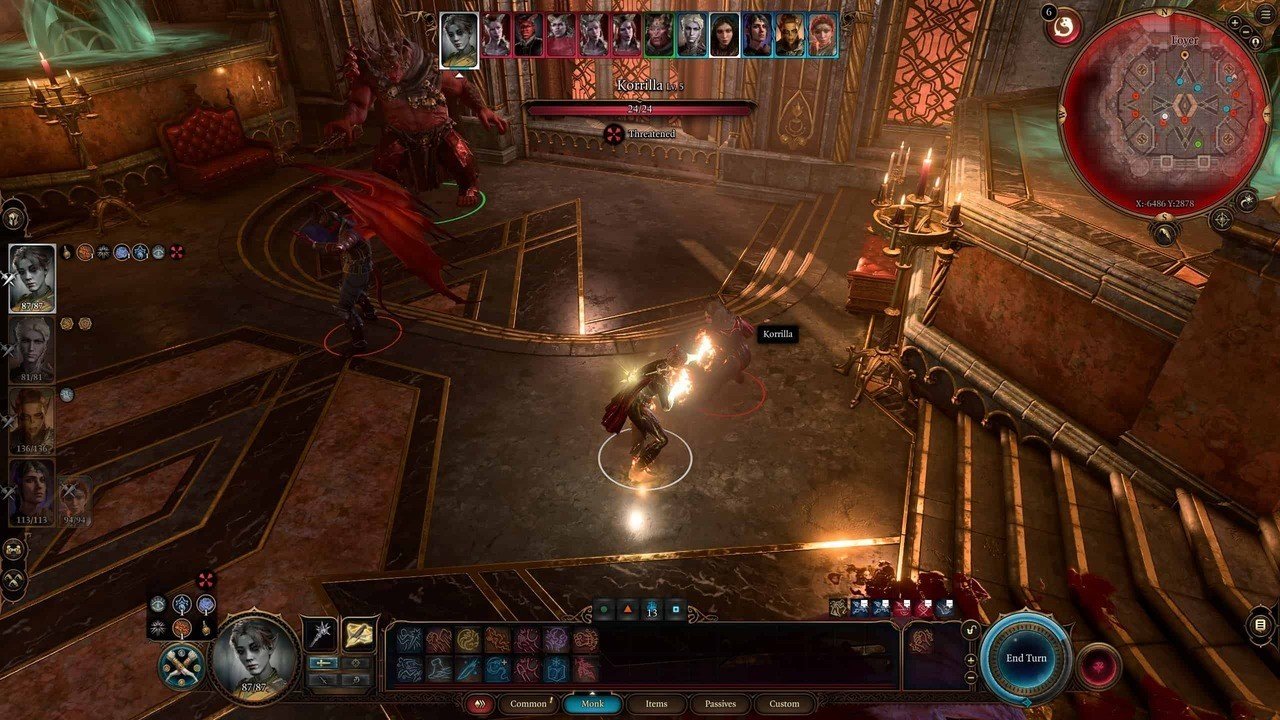 Image credit: Reddit
Image credit: Reddit
Monk build can vary due to the class's characteristics. In this guide, we will look at general recommendations: race selection, attributes, weapon, and armor choices. The Monk class isn't too specific about race, so any can be chosen. However, some races have intriguing starting characteristics. We recommend races like high or wood elf, human, and half-elf. We also suggest the following backgrounds: charlatan, hermit, artisan, and aristocrat.
Once you've settled on a race, it's time to assign attributes. For the Monk class, dexterity and wisdom are crucial. Dexterity boosts your hit chances and armor class. This is vital as initially, you will be poorly protected. Wisdom also enhances armor class and spell saving throws.
We recommend distributing attributes as:
• Dexterity: 17;
• Constitution: 14;
• Intelligence: 8;
• Wisdom: 16;
• Charisma: 10.
Weapon choice will differ for Monk subclasses, but any type can be chosen. Early in the game, weapon proficiency will be significant for all subclasses. However, if you go with Open Hand Monks, later on, unarmed damage will be greater than with weapons.
Remember, Monks don't have armor proficiency. Hence, the dexterity attribute is vital for the Monk class. We also recommend wearing magical garments for maximizing armor rating.
Conclusion
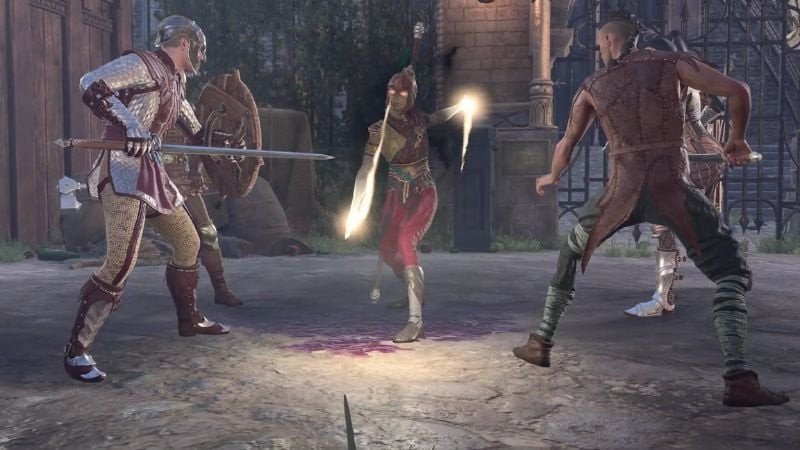 Image credit: gmodz.ru
Image credit: gmodz.ru
In this Baldur's Gate 3 Monk class guide, we explored all the Monk class features. Having read this article, you can now choose a race for your character and correctly assign attributes from the start.
The Monk is a powerful and intriguing class. Monk subclasses offer varied gameplay experiences. Your character can become a true monk, a silent ninja, or even master of the Four Elements. This class is great for beginners since it can both heal and deal massive damage.
Main image: Yahoo


 Irina "Zemlia" Sukhanova
Irina "Zemlia" Sukhanova

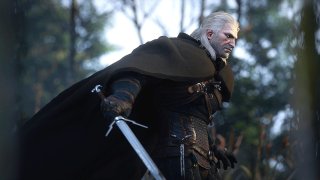
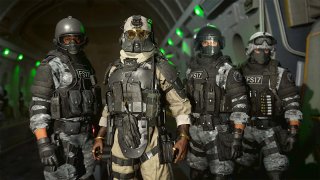









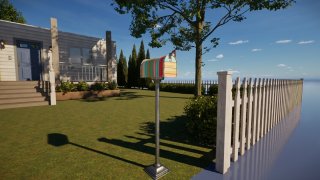





0 comments